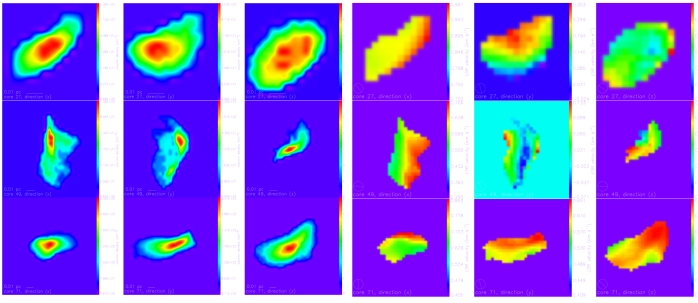| EPoS Contribution |
|
The angular momentum of dense cores: what do we really measure?
Sami Dib CEA/Saclay, Saclay, France | |
| We show, using very high-resolution three-dimensional numerical simulations of turbulent, magnetized, and self-gravitating molecular clouds that earlier observational measurements of the specific ang ular momentum of dense cores formed in the clouds systematically overestimate the specific angular momentum by a factor ~ 10. This factor of ~ 10 is derived by a detailed comparison of the cores intrinsic specific angular momentum (j), and by a 2 dimensional derivation of j obtaine d by building synthetic velocity maps of the cores that mimick NH_{3} and N_{2}H^{+} observations and which are themselves also compared to real observations. We suggest that earlier estimates of j in dense cores should be scaled down by a factor of ~ 10. This correction has important con sequences for the amount of angular momentum we assume to be present in dense cores and thus to the quantity of angular momentum they need to lose on their way to form stars. It will also modify our understanding of the role played by rotation in the f ragmentation process of the cores. | |
 | |
| Caption: The figure shows the synthetic column density maps in the N2H^+ tracer of a few selected cores formed in one of the molecular cloud simulations (left). The right figure displays the synthetic N2H^{+} velocity maps of the same cores. The line enclosed by the circle in the lower left corner of the box shows the orientation of the velocity gradient. | |
| Collaborators: P. Hennebelle, ENS, France A. Goodman, HSCfA, USA J. Pineda, HSCfA, USA T. Csengeri, CEA, France S. Bontemps, LAB, France E. Audit, CEA, France |
Suggested Session: Cores and Collapse, Molecular Clouds, Turbulence, Magnetic Fields |

